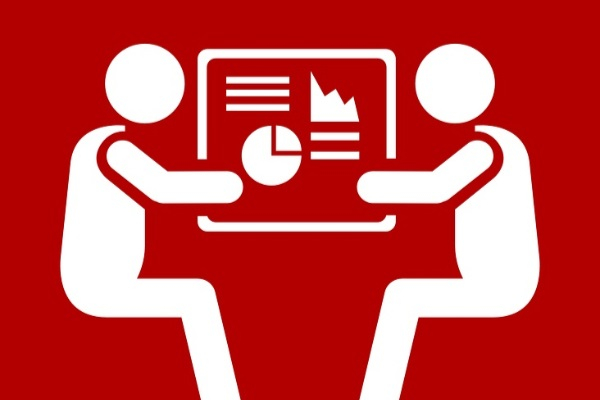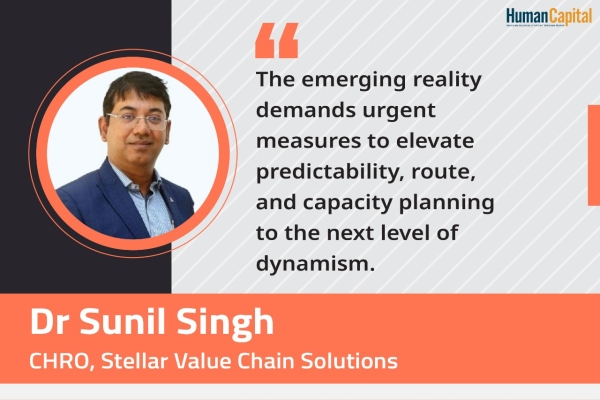People Analytics, also referred to as 'HR Analytics', has become dramatically popular over the recent years. Organisations are using data-driven analytics to improve the way they identify, attract, develop, and retain talent. These tools are increasingly being used by managers and senior talent leaders to identify behavioural patterns, reduce bias, and improve performance. People Analytics is fast emerging as an effective way to understand employee behaviour and gauge the extent to which it is aligned to the organisation's culture, using psychometric data.
Prediction of employee behaviour is essential for talent acquisition, and for creating specialised teams. These decisions, in turn, are linked to the organisation's strategies like hiring, compensation, etc. For example, market surveys to benchmark compensation help to understand the latest trends, and devise compensation policies accordingly. Employer brand positioning is also being shaped by information provided by new data mining techniques. Another vital aspect is that of designing Learning Pedagogy. Training and learning strategies for an organisation are again being designed depending on how a majority of employees respond to a particular learning tool or medium. This data is used to design learning courses by making use of employee experience and reflective thinking to create concrete learning and training strategies and processes. For instance, if a majority understands a particular topic better through experience, experiential on the job training would be the way to go.
Social Analytics
Apart from these predictive aspects of analytics, another key area that is gaining salience is the use of 'Social Analytics' for HR and organisational decisions. In its most primitive form, water coolers/canteens and other channels of informal conversations provided insights about an employees' mindset with respect to the organisation, their grievances, major reasons for attrition, and so on. Now, such conversations happen on social media platforms.
Organisations at large are predicting personality by way of social footprints. The type of posts, and the frequency of posts and interactions with friends are major data points on the social environment. Many organisations look at insights from an employee's/prospective employee's activity status on LinkedIn, the type of companies followed, and the size and nature of their network. However, the question that remains is whether one can actually devise a behavioural framework based on social media. This would at best be a single-dimensional approach to People Analytics. Juxtaposing the data on individuals and enriching it with data about the interplay among individuals, is equally or more important. And even more crucial is the usage of these data points to enhance behavioural assessment tests and tools, not only to make the right hiring decisions but also to evaluate job success rate.
For Human Resource professionals, operating in this VUCA world of disruption, it is important to make the best of both - the human as well as the artificial side of Analytics. Effective analysis of data for decision-making provides them with an opportunity to position themselves as fact-based partners of the Strategic Board, using state-of-the-art techniques to recruit and retain great managers as well as innovators who are crucial for driving superior value in companies.
Is your organisation post-COVID-ready?
Trending
-
SBI General Insurance Launches Digital Health Campaign
-
CredR Rolls Out 'Life Happens' Leave For Its Employees
-
Meesho Announces 30-Week Gender-Neutral Parental Leave Policy
-
Microsoft Unveils Tech Resilience Curriculum To Foster An Inclusive Future
-
60% Indian Professionals Looking For Job Change Due To COVID: Survey
-
SpringPeople And Siemens Collaborate For Digital Transformation Push
-
86% Professionals Believe Hybrid Work Is Essential For Work Life Balance: Report
-
Almost 1 In Every 3 People's Personal Life Affected Due To Work Stress
-
Meesho Rolls Out Reset And Recharge Policy For Employees
-
80% Of Talent Leaders & Academics Say Pandemic Changed Skill Needs For Youth: Report
-
Hero Electric Rolls Out 'Hero Care' Program For Employees
-
Human Capital In Collaboration With ASSOCHAM Hosts Virtual Conference
-
IKEA India, Tata STRIVE Collaborate To Create Employability And Entrepreneurship Opportunities
-
SAP India, Microsoft Launch Tech Skilling Program for Young Women
-
DXC Technology, NASSCOM Collaborate For Employability Skills Program
-
Lenskart To Hire Over 2000 Employees Across India By 2022
-
Mindtree Launches Learn-and-Earn Program
-
Tata AIA Extends 'Raksha Ka Teeka' To Its Employees
-
Swadesh Behera Is The New CPO Of Titan
-
NetConnect Global Plans To Recruit 5000 Tech Professionals In India
-
Hubhopper Plans To Hire 60% Of Indian Podcasters By 2022
-
Corporate India Needs More Women In Leadership Roles: Report
-
Aon to Invest $30 Million and Create 10,000 Apprenticeships by 2030
-
Tech Mahindra Launches ‘Gift a Career’ Initiative for Upskilling of Youth
-
40% Women Prefer Flexible Working Options in Post-COVID World: Survey
-
3 out of 4 companies believe they can effectively hire employees virtually: Report
-
Vodafone , CGI and NASSCOM Foundation launch digital skills platform
-
Odisha: Bank, postal employees to deliver cash for elderly, differently-abled persons
-
Skill India launches AI-based digital platform for "Skilled Workforce"
-
Hiring activity declines 6.73% in first quarter: Survey
-
70% startups impacted by COVID-19 pandemic
-
Bajaj Allianz Life ropes in Santanu Banerjee as CHRO
-
Over 70 Percent MSMEs look at cutting jobs to sustain businesses
-
93 Per Cent employees stressed about returning to office post-lockdown
-
Johnson & Johnson India announces family benefits for same gender partners
-
Indian firms turning friendly towards working mothers
-
Welspun India names Rajendra Mehta as new CHRO
-
Wipro partners with NASSCOM to launch Future Skills platform



Human Capital is niche media organisation for HR and Corporate. Our aim is to create an outstanding user experience for all our clients, readers, employers and employees through inspiring, industry-leading content pieces in the form of case studies, analysis, expert reports, authored articles and blogs. We cover topics such as talent acquisition, learning and development, diversity and inclusion, leadership, compensation, recruitment and many more.
Subscribe Now












































Comment